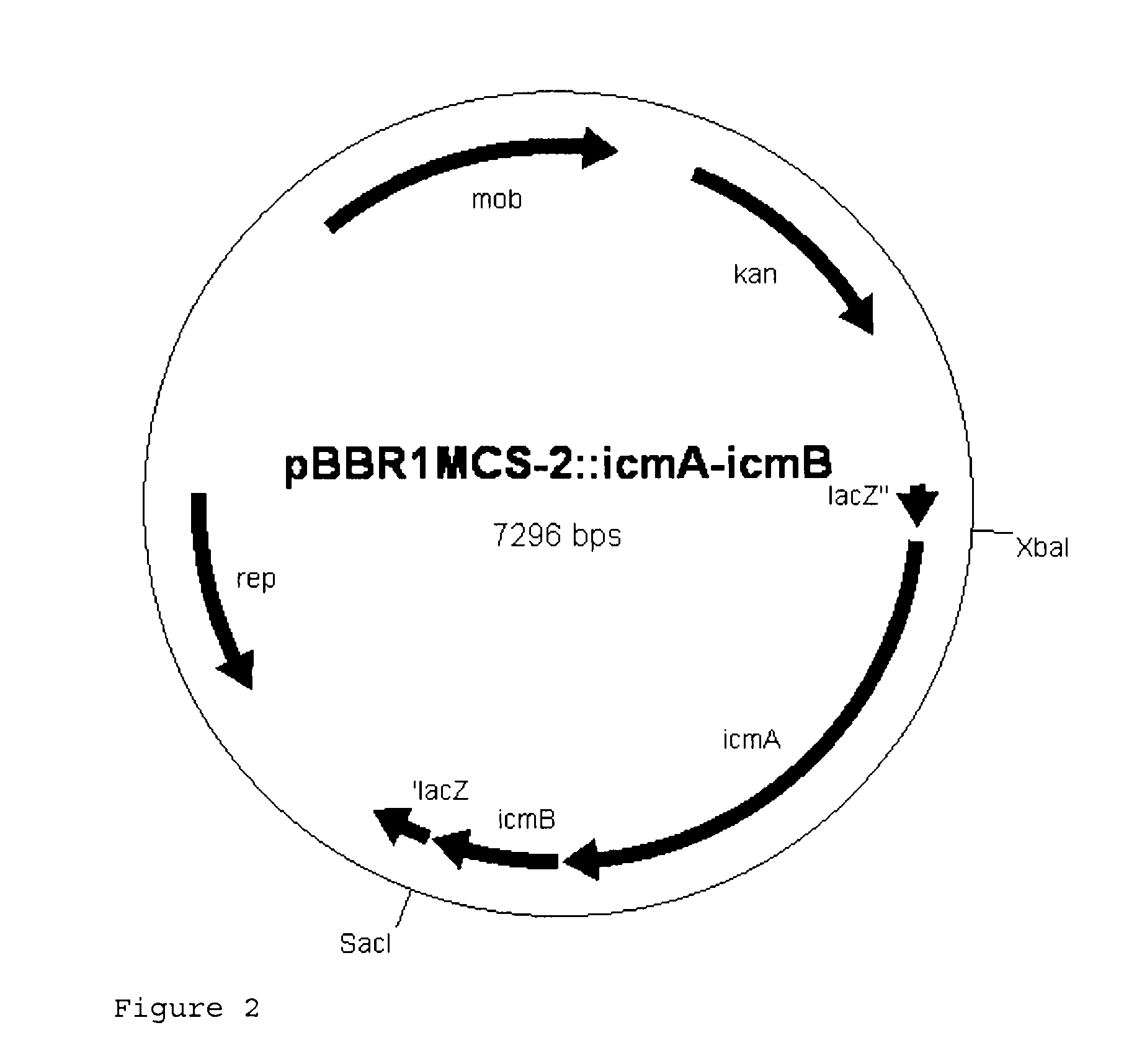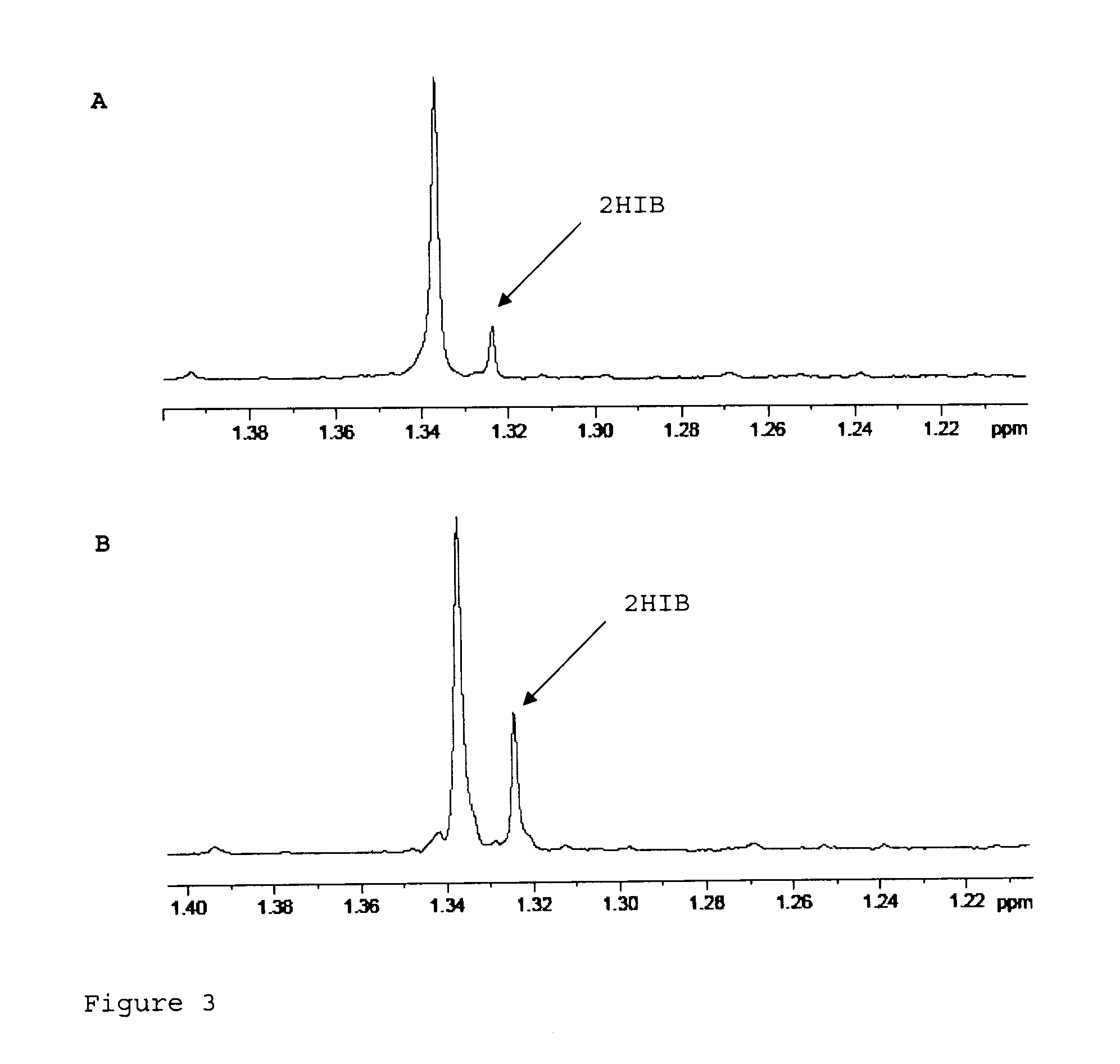Recombinant cell producing 2-hydroxyisobutyric acid
a technology of recombinant cells and isobutyric acid, which is applied in the field of recombinant cells producing 2hydroxyisobutyric acid, can solve the problems of inability to produce nitriles in the neutral ph range, accumulation of ketones and cyanide, and the need for 2-hydroxynitriles which must first be prepared from environmentally harmful reactants
- Summary
- Abstract
- Description
- Claims
- Application Information
AI Technical Summary
Benefits of technology
Problems solved by technology
Method used
Image
Examples
examples
1. Isolation of Genomic DNA and Amplification of Fragments icmA and icmB
[0113]Genomic DNA was isolated from the strain Aquincola tertiaricarbonis (A. tertiaricarbonis DSMZ 18512) using the DNeasy Blood & Tissue kit (Qiagen GmbH, Hilden, Germany) according to the manufacturer's information and used as template in a PCR for amplification of fragments icmA (1.7 kbp; DQ436456) and icmB (0.4 kbp; DQ436457) which code for an enzyme E3. The oligonucleotides Aqt-icmA_fw 5′-CACCATGACCTGGCTTGAGCCGCAG-3′ (forward primer; start codon is underlined) and Aqt-icmA-Hind rev 5′-AAAAAAGCTTCCTGCTCAGAAGACCGGCGTCTCGCG-3′ (reverse primer; stop codon and HindIII cleavage site are underlined) are used for amplification of icmA, and the oligonucleotides Aqt-icmB-Hind_fw 5′-AAAAAAGCTTCCCACCATGGACCAAATCCCGATCCGC-3′ (forward primer; start codon and HindIII cleavage site are underlined) and Aqt-icmB_rev 5′-TCAGCGGGCGCCGCGCGCGGCGAC-3′ (reverse primer; stop codon is underlined) are used for amplification of icmB....
PUM
| Property | Measurement | Unit |
|---|---|---|
| time | aaaaa | aaaaa |
| time | aaaaa | aaaaa |
| time | aaaaa | aaaaa |
Abstract
Description
Claims
Application Information
 Login to View More
Login to View More - R&D
- Intellectual Property
- Life Sciences
- Materials
- Tech Scout
- Unparalleled Data Quality
- Higher Quality Content
- 60% Fewer Hallucinations
Browse by: Latest US Patents, China's latest patents, Technical Efficacy Thesaurus, Application Domain, Technology Topic, Popular Technical Reports.
© 2025 PatSnap. All rights reserved.Legal|Privacy policy|Modern Slavery Act Transparency Statement|Sitemap|About US| Contact US: help@patsnap.com



